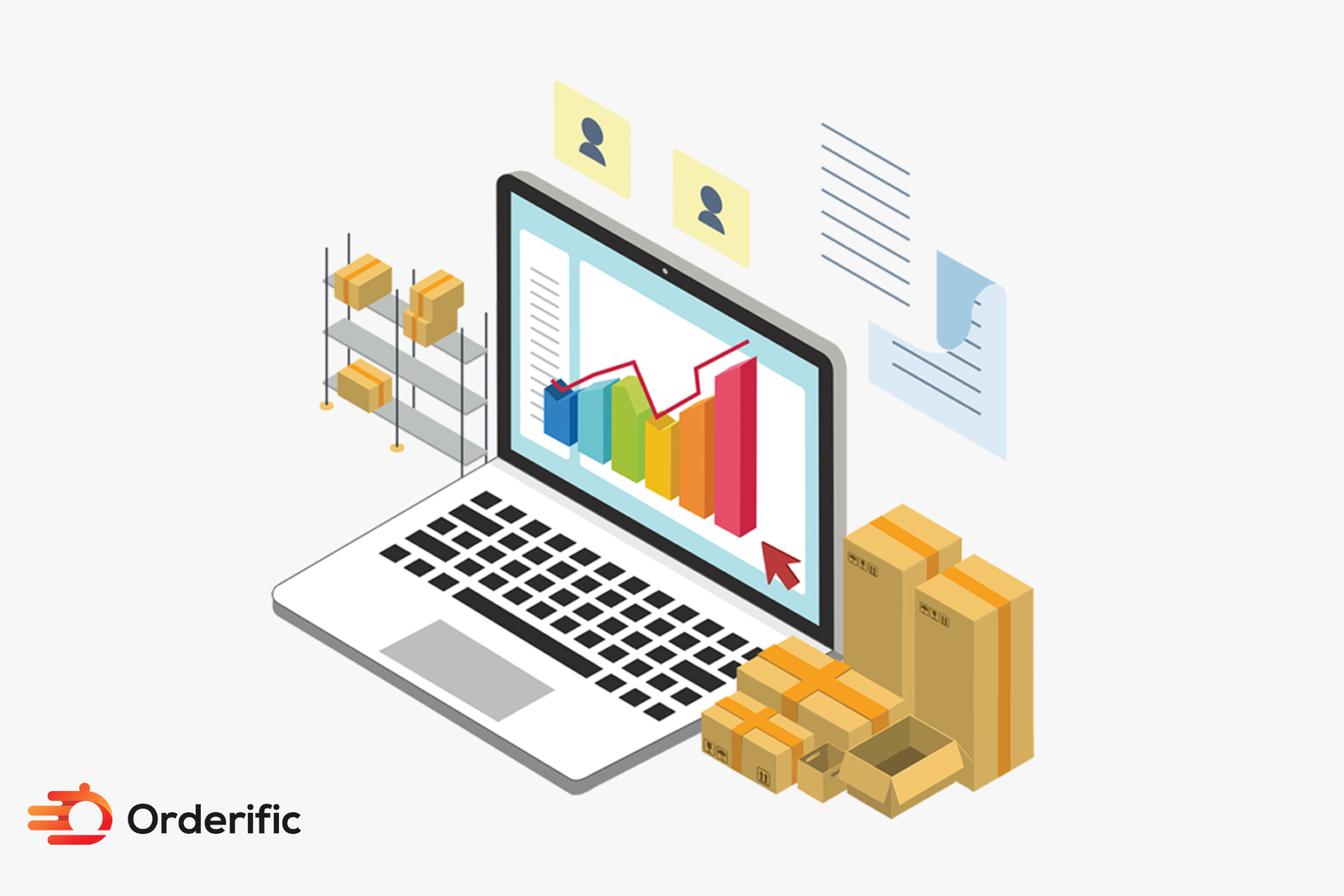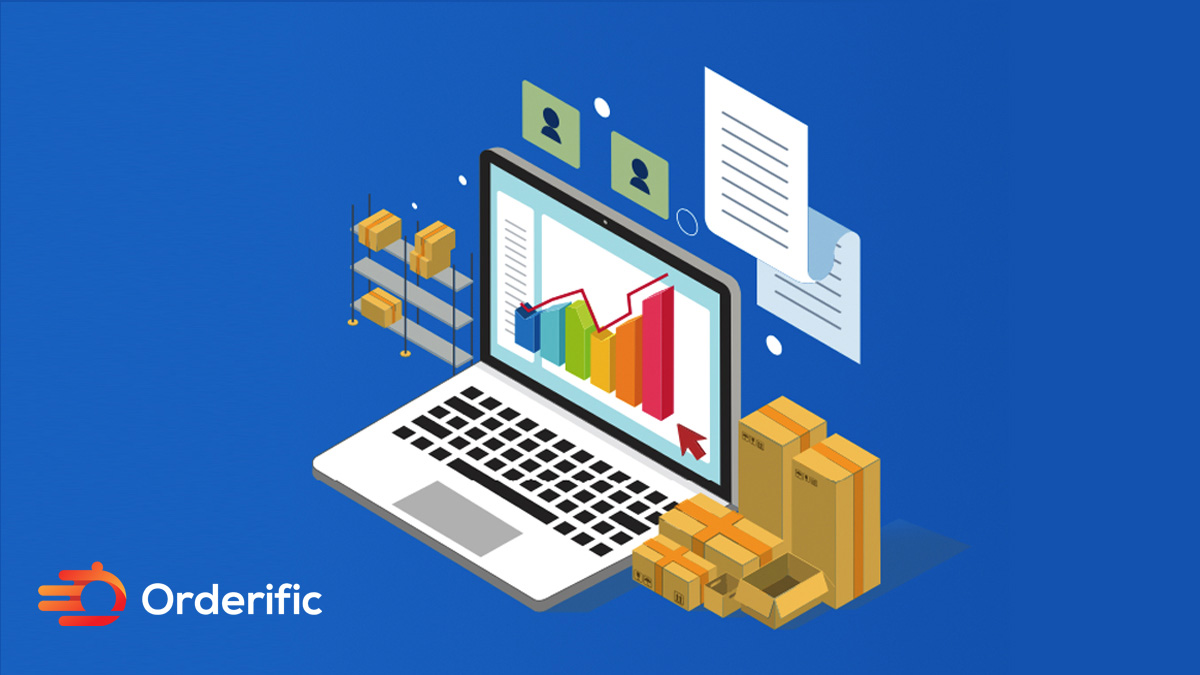Introduction
Inventory turnover calculator is a vital metric that reflects your inventory management efficiency. It tells you the number of times your business has sold and replaced its inventory during a specific period. A high inventory turnover rate could indicate strong sales or effective inventory control, while a low inventory turnover might suggest overstocking or weak sales.
This guide will walk you through the concept of inventory turnover, illustrating the use of an inventory turnover ratio calculator to calculate turnover. We’ll delve into how you can interpret the turnover ratio, discussing both high and low turnover scenarios and the implications of each for your business. Whether you are seeking to enhance your inventory control, reduce excess inventory, or gauge the value of your finished goods, understanding your inventory turnover can be indispensable.
What Is Inventory Turnover?
Inventory turnover, a critical metric in inventory management, is the rate at which a business sells and replaces its inventory. A higher inventory turnover ratio can signify effective inventory management, strong sales, or both. This ratio is calculated using an inventory turnover formula, typically involving the cost of goods sold and the average inventory level over a certain period.
On the other hand, a low inventory turnover may indicate an excess of stock or poor sales. Understanding that high and low inventory turnover scenarios have implications for a business is crucial. For example, a high inventory turnover could mean a business efficiently selling its inventory. Still, it could also suggest that the company is under-stocking and missing potential sales. Conversely, a low inventory turnover might signal overstocking, which ties up capital in unsold goods and increases storage costs.
Managing inventory levels effectively is a critical aspect of running a profitable business. It’s balancing between maintaining enough stock to meet demand (avoiding stockouts) and minimizing your inventory to reduce holding costs. A good inventory turnover ratio will depend on the nature of your business and the industry norms.
Understanding your inventory turnover rate can help you make informed purchasing, production, and sales decisions. It can help you identify issues in your inventory management, allowing you to take steps to improve your turnover rate and, by extension, your business’s profitability. Regularly check your inventory balance, turnover rate, and ending inventory to maintain a pulse on your business’s health.
Inventory turnover is just one of the many metrics you can use to optimize your inventory management. It’s a powerful tool that can provide valuable insights into your operations and profitability.
What Does Inventory Turnover Measure And Tell Me About My Business?

Inventory turnover measures the efficiency of your business in managing its stock. It’s a crucial factor in inventory management that reveals how often a company has sold and replaced its inventory within a specified timeframe. This measurement is vital for understanding the health of your business and offering insights into sales performance, inventory control, and overall profitability.
The inventory turnover calculator uses COGS and average inventory during a period. You can use a ratio calculator to determine this. Note that the interpretation of the turnover ratio varies depending on the context. Both high inventory turnover and low inventory turnover scenarios carry implications for a business.
A high inventory turnover is usually a sign of solid sales and effective inventory management. However, it could also indicate that the business is under-stocking, potentially missing additional sales. On the other hand, a low inventory turnover could signify overstocking, which can tie up capital in unsold goods, increasing storage costs and the risk of goods becoming obsolete. Understanding the balance between these situations is critical to maintaining a good inventory turnover ratio, demonstrating the company’s ability to manage its inventory effectively.
Monitoring your inventory levels, including beginning and ending, is vital to inventory control. These figures and your turnover rate will help you keep a pulse on your business’s health. Regular inventory balance checks can inform purchasing, production, and sales decisions, helping you optimize your inventory management and boost profitability.
What Is The Inventory Turnover Formula?
Step 1: Calculate Your Average Inventory (AI)
To calculate average inventory, combine your inventory levels at the beginning and ending of the period you’re considering, then divide by two. This can be expressed as:
Average Inventory (AI) = (Beginning Inventory + Ending Inventory) / 2
It’s important to note that the choice of period can significantly impact your average inventory.
Step 2: Calculate Your Cost of Goods Sold (COGS)
The cost of goods sold (COGS) is a calculation of all the costs associated with producing the goods or services that a company has sold during a particular period. You can compute the COGS by adding the cost of inventory at the beginning of the period, plus purchases during the period, and then subtracting the inventory at the end of the period. That is:
Cost of Goods Sold (COGS) = Beginning Inventory + Purchases during the period – Ending Inventory
Remember, this is a crucial element in calculating your inventory turnover ratio, allowing you to ascertain how efficiently your business is managing its inventory levels and sales.
Step 3: Calculate Your Inventory Turnover Ratio
To calculate your inventory turnover ratio, you divide your cost of goods sold by your average inventory. Expressed as a formula, it looks like this:
Inventory Turnover Ratio = Cost of Goods Sold (COGS) / Average Inventory
This ratio tells you how many times you’ve sold and replaced your inventory during a specific period. A high inventory turnover ratio can indicate strong sales or effective inventory management, but it may also suggest that you’re not stocking enough to meet demand. On the other hand, a low ratio could mean you’re overstocked, tying up capital and potentially increasing storage costs. Therefore, understanding and managing your inventory turnover ratio is key to effectively balancing your stock levels and enhancing your business’s profitability.
How To Calculate Inventory Turnover
A high inventory turnover rate signifies effective inventory control and robust sales. But beware – it might also indicate that your business is under-stocking, leading to missed sales opportunities. Conversely, a low turnover rate could suggest overstocking, tying up your capital in unsold goods, escalating storage costs, and even risking inventory obsolescence.
Calculating inventory turnover involves three steps: calculating your Average Inventory, calculating your Cost of Goods Sold (COGS), and finally, determining the Inventory Turnover Ratio by dividing COGS by Average Inventory.
How Should I Use Inventory Turnover Statistics?
In order to effectively utilize inventory turnover statistics, you should first understand the context of your business and its industry norms. Compare your calculated turnover ratio with industry standards to assess your performance. If your turnover ratio is high, it could suggest strong sales, efficient inventory management, or possibly under-stocking. Conversely, a low turnover ratio may signal overstocking or weak sales.
Remember, achieving a balanced inventory turnover ratio—neither too high nor too low—is key for a business’s profitability. Regularly check your inventory levels, turnover rate, and ending inventory to maintain a healthy pulse on your business’s status.
What Is A Good Inventory Turnover?

The definition of a ‘good’ inventory turnover ratio largely depends on the industry in which your business operates. While a high turnover rate generally indicates strong sales and efficient inventory management, it can also suggest that you’re understocked and could be missing out on potential sales. Conversely, a low turnover ratio may imply overstocking, which can tie up your capital in unsold goods, increase storage costs, and risk inventory becoming obsolete.
A high turnover ratio is beneficial for businesses dealing with perishable goods or quickly obsolete items, like in the food industry or technology sector. Industries with long shelf life or slow-changing goods, like furniture or luxury items, can operate successfully with a lower turnover ratio.
To determine what’s good for your business, compare your inventory turnover ratio with industry benchmarks. If your ratio is significantly lower than the industry average, it might be an indication to review your inventory management practices or sales strategies. Conversely, a turnover ratio significantly higher than the industry average might suggest you’re missing out on sales due to understocking.
Remember, the goal is to find a balance that maximizes profitability while meeting customer demand. Regularly monitor your inventory levels, turnover rate, and ending inventory to stay in tune with your business’s health.
What Is Deadstock?
Deadstock, in the context of inventory management, refers to inventory that has never been sold or has stayed in the inventory for a long time due to lack of demand. These are products that can no longer be sold, often because they’ve become obsolete, gone out of style. Deadstock represents a cost for businesses in several ways – it ties up capital that could be used elsewhere, takes up storage space, and may require disposal if the products are perishable or become obsolete. Effectively managing inventory turnover can help reduce the amount of deadstock, improving the overall efficiency and profitability of a business. Regular monitoring and analysis of inventory turnover rates, combined with actions to balance stock levels to meet demand, can help businesses mitigate the risks and costs associated with deadstock.
What Is Days Sales Inventory (DSI)?
Days Sales Inventory (DSI) is an important metric in inventory management that measures the average number of days that your company holds inventory before selling it. This calculation is done by the following formula is as follows:
Days Sales Inventory (DSI) = (Inventory / Cost of Goods Sold) x Number of days in the period
DSI provides a snapshot of how long it takes for a company to turn its inventory into sales. A lower DSI typically implies faster inventory turnover, indicating efficient inventory management and robust sales. However, a very low DSI might signal under-stocking which could lead to lost sales opportunities. Conversely, a high DSI could suggest overstocking, tying up capital in unsold goods and increasing storage costs. Therefore, understanding and managing DSI effectively is crucial to balance stock levels and optimize profitability.
Conclusion
In conclusion, understanding and effectively managing your inventory turnover ratio is of vital importance to the success of your business. Having a clear grasp of this key metric can help you balance your stock levels, optimize your sales, and enhance your profitability. Remember, while a high turnover ratio may indicate strong sales, it could also suggest under-stocking. Similarly, a low turnover ratio might signal overstocking, which can result in additional storage costs and the risk of unsold goods becoming obsolete. Regular monitoring of your inventory levels, turnover rate, and ending inventory will help you keep a pulse on the health of your business, and make informed decisions about purchasing, production, and sales.
Take control of your inventory management today. Schedule a demo with Orderific to unearth powerful insights into your inventory management and unlock the true potential of your business.
FAQs
What is an inventory turnover calculator, and how does it help assess business efficiency?
An inventory turnover calculator is a tool that helps businesses measure how efficiently they manage their stock, by calculating the number of times inventory is sold and replaced.
How is the inventory turnover ratio calculated, and what insights does it provide into inventory management?
The inventory turnover ratio is calculated by dividing the cost of goods sold by the average inventory, providing insights into of a company’s inventory management and sales performance.
What impact does a high or low inventory turnover ratio have on a company’s operations and profitability?
A high or low inventory turnover ratio can influence a company’s operations and profitability by affecting sales, storage costs, and risk of unsold goods becoming obsolete.
Are there specific industries or business types where the inventory turnover calculator is particularly useful?
Yes, the calculator is particularly useful for businesses dealing with perishable goods or goods that quickly become obsolete.













